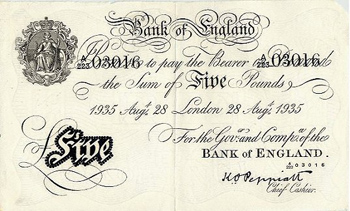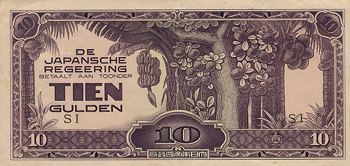War Time Counterfeits
Posted on 1/24/2012
War strategy goes beyond munitions, troop placement, logistics and politics. A necessary component to winning a war is economic supremacy. Nations during war time have many ways of accomplishing this; but when traditional methods fail to dominate the enemy’s economy, more sinister methods are sometimes used.
Counterfeiting another nation’s currency has been war strategy in almost every major conflict since the 18th century. For example, during the Seven Years War when Austrian and Russian troops marched through Poland they flooded the country with counterfeit notes. The British copied American notes during the War of Independence in 1776, and Napoleon did it in Vienna in 1806. The Germans counterfeited British notes during World War II and the Japanese printed Chinese currency in the 1930s and 40s. The United States even counterfeited Confederate notes during the Civil War and Iraqi notes during the First Gulf War in the 1980s.
Why would one state counterfeit another states note? Well, there are a few reasons: one, to demoralize the population of the enemy state with horrifying messages: “Present this safe conduct pass, get out of war, you don’t want to die.” Two, to actually spend on goods and services. During WWII the Germans counterfeited British £5 notes to pay their own spies in British territory and to buy things such as munitions. Three, to have the enemy’s population lose faith in the currency. If everyone is constantly questioning the validity of the notes in their hand, and shopkeepers continually refuse to accept notes, then the population has lost confidence in their currency. And finally, if a country can pump enough counterfeits into an enemy nation they can single handedly cause inflation.
I will close this article with an interesting anecdote about Chinese counterfeits printed by the Japanese during the early 1940s. During the Japanese – Chinese conflict that began in 1937, Japanese troops captured The Dahtung Book Co. printing factory. The Dahtung Book Co. printed the 1941 issue 10 Yüan note for The Bank of Communications. The Japanese, instead of continuing the printing at the established factory, decided to pack up and move all the equipment and technicians to Tokyo to continue printing the Chinese notes. But, the irony is that it took the Japanese Army so long to move the factory and to get it operational in Tokyo; that by the time they had accomplished this the Chinese currency had devalued by so much that the 10 Yüan notes no longer had any value!
Stay Informed
Want news like this delivered to your inbox once a month? Subscribe to the free PMG eNewsletter today!

